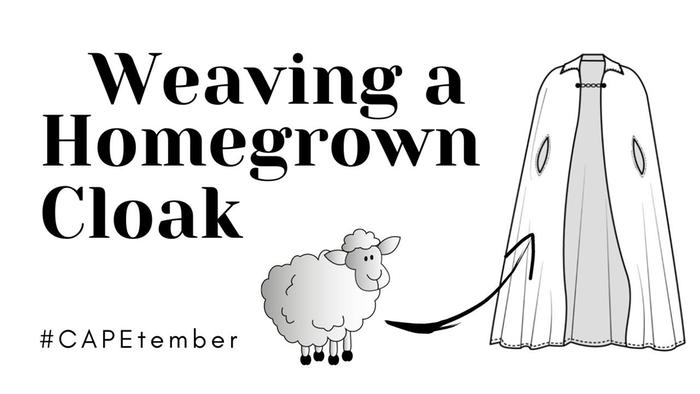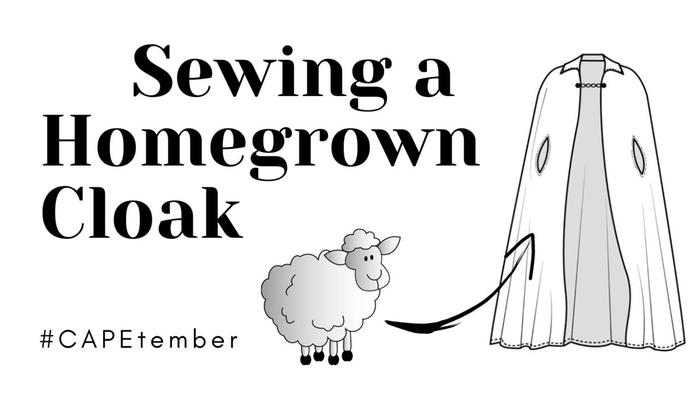
 2
2











 1
1




Visit Redhawk's soil series: https://permies.com/wiki/redhawk-soil
How permies.com works: https://permies.com/wiki/34193/permies-works-links-threads
 1
1




No, the instructions are extremely minimalistic!r ranson wrote:I'm also confused about the neck-facing piece. That's not talked about in the instructions.
I didn't cut any facings because I won't have enough fabric. Just curious what one would do with that if they were making the cloak according to the instructions.
Visit Redhawk's soil series: https://permies.com/wiki/redhawk-soil
How permies.com works: https://permies.com/wiki/34193/permies-works-links-threads




r ranson wrote:Yes, I'm going to be flat-lining and extending the front by about 3 inches or so.
Visit Redhawk's soil series: https://permies.com/wiki/redhawk-soil
How permies.com works: https://permies.com/wiki/34193/permies-works-links-threads
 14
14












 6
6











 5
5





'What we do now echoes in eternity.' Marcus Aurelius
How Permies Works Dr. Redhawk's Epic Soil Series
 8
8




I can picture how to do it, but it involves having enough extra width of fabric at the front for your "extend the front edge out several inches" + "fold over the equivalent number of inches to the inside" + a seam allowance.r ranson wrote: ...and extending the front edge out several inches.
There's got to be a way, because coat collars don't always go right to the edge.
Visit Redhawk's soil series: https://permies.com/wiki/redhawk-soil
How permies.com works: https://permies.com/wiki/34193/permies-works-links-threads
 6
6




.r ranson wrote:I've put my brain to the problem all day and I can't figure out how I'll sew on the collar
While flat-lining the cloak
and extending the front edge out several inches.
There's got to be a way, because coat collars don't always go right to the edge. I just can't figure it out. yet.
But for now, I'm going to go have a panic attack before trying to cut into this cloth.
Thought-dweller and dreamer. Animal lover. Enthusiast about everything.
www.myflyaways.com
 8
8




Visit Redhawk's soil series: https://permies.com/wiki/redhawk-soil
How permies.com works: https://permies.com/wiki/34193/permies-works-links-threads
 3
3




 4
4




Zone 6, 45 inches precipitation, hard clay soil




 5
5




Zone 6, 45 inches precipitation, hard clay soil




 2
2




"Also, just as you want men to do to you, do the same way to them" (Luke 6:31)
 4
4




Personally, using a separate hat allows for more flexibility. I have my ratty wide-brimmed farm hat which helps keep the sun out of my eyes and is really comfy and clearly needs some TLC. (I fixed it once, but the fix is wearing through so... needs a patch on the patch???)Inge Leonora-den Ouden wrote:I saw a few beautiful cloaks last Sunday. It was at a (small) 'medieval fair'. All of those cloaks had hoods. Wouldn't you like to have a hood? Of course that will take more cloth ...
Visit Redhawk's soil series: https://permies.com/wiki/redhawk-soil
How permies.com works: https://permies.com/wiki/34193/permies-works-links-threads
 5
5




Jay Angler wrote:
That said, as least one of the pictures I looked at recently seemed to have the hood buttoned on. That way the hood could be there or not, could be identical fabric or complementary or could change with the seasons.
"The only thing...more expensive than education is ignorance."~Ben Franklin. "We can easily forgive a child who is afraid of the dark; the real tragedy of life is when men are afraid of the light." ~ Plato
 4
4

















 5
5




r ranson wrote:....
But I have some nice hats and I can always sew a medieval hood that is it's own garment . . . actually, that might be fun.
"Also, just as you want men to do to you, do the same way to them" (Luke 6:31)
 1
1




r ranson wrote:Hood - I love the way they look, but...
- I worry about them adding too much weight to the back of the cloak and causing them to pull at the neck.
- 'cold' here is about freezing temp. I don't think it would get cold enough to use a hood regularly
- I doubt I have enough cloth. I'm already having to shorten the pattern more than I want to make this work.
But I have some nice hats and I can always sew a medieval hood that is it's own garment . . . actually, that might be fun.
Collar - I think I have an idea but this is a very heavy garment so I'm going to run to the fabric shop to see if they have something like fusible interfacing but stretchy that I can add to the neckline before I put the collar on. The weaver sews talks about knit interfacing for adding strength to seams, so I'll see what they have.
I am so excited about how this is coming along.
In some ways I'm regretting handsewing this huge garment, but in other ways, the results make the extra time worth it.
Thank you everyone for your feedback and suggestions. I'm only popping on to the computer for a few min each day to read a few things - most of all this thread.
How's everyone else's #CAPEtmber coming along?
"The only thing...more expensive than education is ignorance."~Ben Franklin. "We can easily forgive a child who is afraid of the dark; the real tragedy of life is when men are afraid of the light." ~ Plato

 4
4




r ranson wrote:
How's everyone else's #CAPEtmber coming along?
 2
2




r ranson wrote:
Collar - I think I have an idea but this is a very heavy garment so I'm going to run to the fabric shop to see if they have something like fusible interfacing but stretchy that I can add to the neckline before I put the collar on. The weaver sews talks about knit interfacing for adding strength to seams, so I'll see what they have.
 8
8











 6
6











 5
5











 3
3




OK, just curious - don't feel obligated to answer, but are you left handed or ambidextrous? That could explain why 4321 is easier for you. Eye dominance may be a factor also - I'm nominally right handed, but left eye dominant, so it would be interesting for me to do a test and see which works best for me.r ranson wrote: I'm doing a very simple version where I thread 4321 as this is fastest for for my body (most people thread 1234 as it matches them better).
Visit Redhawk's soil series: https://permies.com/wiki/redhawk-soil
How permies.com works: https://permies.com/wiki/34193/permies-works-links-threads
 4
4




Jay Angler wrote:
OK, just curious - don't feel obligated to answer, but are you left handed or ambidextrous? That could explain why 4321 is easier for you. Eye dominance may be a factor also - I'm nominally right handed, but left eye dominant, so it would be interesting for me to do a test and see which works best for me.r ranson wrote: I'm doing a very simple version where I thread 4321 as this is fastest for for my body (most people thread 1234 as it matches them better).







 3
3











 9
9











 2
2




r ranson wrote:Here's a short video to prove that I did get the cloak made in time.
If anyone wanted to pop over to youtube and give the video a like and a comment, it would be a huge help with the youtube algorithm.
The longer video will come soon.
"The only thing...more expensive than education is ignorance."~Ben Franklin. "We can easily forgive a child who is afraid of the dark; the real tragedy of life is when men are afraid of the light." ~ Plato
 2
2




Visit Redhawk's soil series: https://permies.com/wiki/redhawk-soil
How permies.com works: https://permies.com/wiki/34193/permies-works-links-threads
 5
5




Jay Angler wrote:Well done! The quick glimpses we got suggest you found a way to manage your collar concerns! Are you willing to post a still shot of the neck area, or will you keep us in suspense?







 4
4











 13
13












 2
2





 5
5




Live, love life holistically
 6
6




 4
4




"Our body is our garden, our will is our gardener" ~ Leonardo da Vinci
 4
4




Zone 6, 45 inches precipitation, hard clay soil




 1
1




May Lotito wrote:The cape came out so lovely! What kind of closure are you planning on? A button hole might not be a good choice for this fabric even if you reinforce it with some backing. I have seen many nice coats given away to the free store due to closure failures. If you like the looks of buttons, you can fake that by sewing the buttons on the outside and use magnetic snaps for actual closure. Both sides of the plackets need to be stabilized somehow to avoid stretching.
"The only thing...more expensive than education is ignorance."~Ben Franklin. "We can easily forgive a child who is afraid of the dark; the real tragedy of life is when men are afraid of the light." ~ Plato
 3
3




I think Raven tried something like a pennanular, but the poky bit wouldn't go through her lining.Carla Burke wrote:I'd suggest frogs, for something permanently attached, or for not so much permanent, a sturdy pennanular.
Visit Redhawk's soil series: https://permies.com/wiki/redhawk-soil
How permies.com works: https://permies.com/wiki/34193/permies-works-links-threads

|
30 seconds to difuse a loaf of bread ... here, use this tiny ad:
The new kickstarter is now live!
https://www.kickstarter.com/projects/paulwheaton/garden-cards
|









